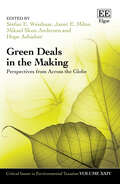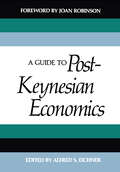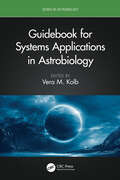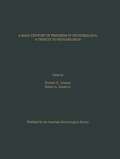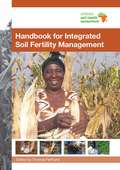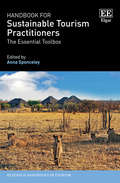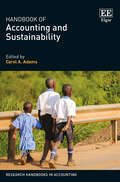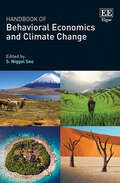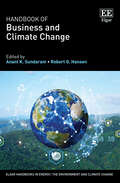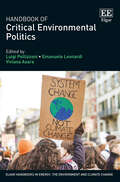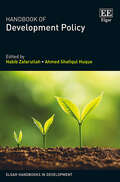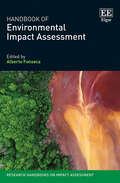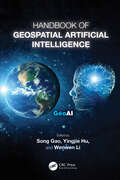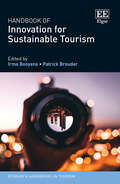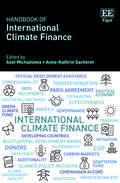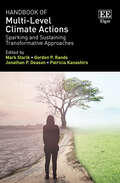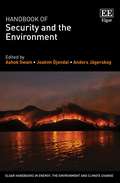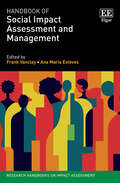- Table View
- List View
Great Britain and Ireland annual precipitation (UEB Uncontracted)
This is a multi-page image of annual precipitation in Great Britain and Ireland, set on two pages. There are locator dots shown, which will be at the top left of each page when the images are the right way up. Great Britain and Ireland map: This page shows a map of Great Britain and Ireland only. It has a dashed line image border and a north arrow. The map of Great Britain and Ireland is in the middle of the page and extends to the top and bottom of the page. Mainland Great Britain is to the right and separated from Ireland by the Irish Sea. The north arrow is in the top right corner of the page and is framed by an image border. Great Britain and Ireland annual precipitation: This page shows a map of Great Britain and Ireland indicating rainfall in different areas. It has a key, a north arrow and a dashed line image border. The key is at the top left of the page. On the left, it shows examples of the textures (colours) used to indicate levels of rainfall, on the map, with descriptive labels to the right. The key is framed by an image border. Britain and Ireland are in the centre of the page and extend to the top and bottom of the page with mainland Britain on the right and Ireland on the left. In the top right corner of the diagram the north arrow is framed by an image border.
Great Britain and Ireland January temperatures (Large Print)
This is a multi-page image of Great Britain and Ireland January temperatures, set on two pages. There are locator dots shown, which will be at the top left of each page when the images are the right way up.Great Britain and Ireland map: This page shows a map of Britain and, Ireland. It has a dashed line image border and a north arrow. The map of Britain and, Ireland is in the middle of the page and extends to the top and bottom of the page. Mainland Great Britain is to the right and separated from Ireland by the Irish Sea. The north arrow is in the top right corner of the page and is framed by an image border. Great Britain and Ireland January temperatures: This is a map of Britain and, Ireland with a dashed line image border and a north arrow. Great Britain and Ireland are in the centre of the page extending to the top and bottom. Ireland is on the left and Great Britain on the right separated by the Irish Sea. There are five heavy dashed lines representing isotherms (lines of equal temperature) shown on the map. These run approximately north to south, although one of these, in the centre of Ireland, is a closed loop. The temperature labels are to be found to the bottom and to the right of the land mass. In the top right corner is a north arrow enclosed by a dashed line image border.
Great Britain and Ireland January temperatures (UEB Contracted)
This is a multi-page image of Great Britain and Ireland January temperatures, set on two pages. There are locator dots shown, which will be at the top left of each page when the images are the right way up.Great Britain and Ireland map: This page shows a map of Britain and, Ireland. It has a dashed line image border and a north arrow. The map of Britain and, Ireland is in the middle of the page and extends to the top and bottom of the page. Mainland Great Britain is to the right and separated from Ireland by the Irish Sea. The north arrow is in the top right corner of the page and is framed by an image border. Great Britain and Ireland January temperatures: This is a map of Britain and, Ireland with a dashed line image border and a north arrow. Great Britain and Ireland are in the centre of the page extending to the top and bottom. Ireland is on the left and Great Britain on the right separated by the Irish Sea. There are five heavy dashed lines representing isotherms (lines of equal temperature) shown on the map. These run approximately north to south, although one of these, in the centre of Ireland, is a closed loop. The temperature labels are to be found to the bottom and to the right of the land mass. In the top right corner is a north arrow enclosed by a dashed line image border.
Great Britain and Ireland January temperatures (UEB Uncontracted)
This is a multi-page image of Great Britain and Ireland January temperatures, set on two pages. There are locator dots shown, which will be at the top left of each page when the images are the right way up.Great Britain and Ireland map: This page shows a map of Britain and, Ireland. It has a dashed line image border and a north arrow. The map of Britain and, Ireland is in the middle of the page and extends to the top and bottom of the page. Mainland Great Britain is to the right and separated from Ireland by the Irish Sea. The north arrow is in the top right corner of the page and is framed by an image border. Great Britain and Ireland January temperatures: This is a map of Britain and, Ireland with a dashed line image border and a north arrow. Great Britain and Ireland are in the centre of the page extending to the top and bottom. Ireland is on the left and Great Britain on the right separated by the Irish Sea. There are five heavy dashed lines representing isotherms (lines of equal temperature) shown on the map. These run approximately north to south, although one of these, in the centre of Ireland, is a closed loop. The temperature labels are to be found to the bottom and to the right of the land mass. In the top right corner is a north arrow enclosed by a dashed line image border.
Great Britain and Ireland July temperatures (Large Print)
This is a multi-page image of Great Britain and Ireland July temperatures, set on two pages. There are locator dots shown, which will be at the top left of each page when the images are the right way up. Great Britain and Ireland map: This page shows a map of Great Britain and Ireland. It has a dashed line image border and a north arrow. The map is in the middle of the page and extends to the top and bottom of the page. Mainland Great Britain is to the right and separated from Ireland by the Irish Sea. The north arrow is in the top right corner of the page and is framed by an image border. Great Britain and Ireland July temperatures: This is a map of Great Britain and Ireland with a dashed line image border and a north arrow. Great Britain and Ireland are in the centre of the page extending to the top and bottom. Ireland is on the left and Britain on the right separated by the Irish Sea. There are six heavy dashed lines representing isotherms (lines of equal temperature) shown on the map. Most of these run from east to west, although two of the lines form closed loops; these are indicated by labels on the right. In the top right corner is a north arrow enclosed by a dashed line image border.
Great Britain and Ireland July temperatures (UEB Contracted)
This is a multi-page image of Great Britain and Ireland July temperatures, set on two pages. There are locator dots shown, which will be at the top left of each page when the images are the right way up. Great Britain and Ireland map: This page shows a map of Great Britain and Ireland. It has a dashed line image border and a north arrow. The map is in the middle of the page and extends to the top and bottom of the page. Mainland Great Britain is to the right and separated from Ireland by the Irish Sea. The north arrow is in the top right corner of the page and is framed by an image border. Great Britain and Ireland July temperatures: This is a map of Great Britain and Ireland with a dashed line image border and a north arrow. Great Britain and Ireland are in the centre of the page extending to the top and bottom. Ireland is on the left and Britain on the right separated by the Irish Sea. There are six heavy dashed lines representing isotherms (lines of equal temperature) shown on the map. Most of these run from east to west, although two of the lines form closed loops; these are indicated by labels on the right. In the top right corner is a north arrow enclosed by a dashed line image border.
Great Britain and Ireland July temperatures (UEB Uncontracted)
This is a multi-page image of Great Britain and Ireland July temperatures, set on two pages. There are locator dots shown, which will be at the top left of each page when the images are the right way up. Great Britain and Ireland map: This page shows a map of Great Britain and Ireland. It has a dashed line image border and a north arrow. The map is in the middle of the page and extends to the top and bottom of the page. Mainland Great Britain is to the right and separated from Ireland by the Irish Sea. The north arrow is in the top right corner of the page and is framed by an image border. Great Britain and Ireland July temperatures: This is a map of Great Britain and Ireland with a dashed line image border and a north arrow. Great Britain and Ireland are in the centre of the page extending to the top and bottom. Ireland is on the left and Britain on the right separated by the Irish Sea. There are six heavy dashed lines representing isotherms (lines of equal temperature) shown on the map. Most of these run from east to west, although two of the lines form closed loops; these are indicated by labels on the right. In the top right corner is a north arrow enclosed by a dashed line image border.
Green Deals in the Making: Perspectives from Across the Globe (Critical Issues in Environmental Taxation series)
Greenhouse gas concentrations are rapidly increasing and pathways to limit global warming require fundamental economic transitions. Green Deals in the Making addresses the challenges and opportunities associated with the implementation of Green Deals, in particular the use of market-based instruments.Expert contributors shed light on the complexities arising for the implementation of Green Deals in times of the context of the ongoing Covid-19 pandemic, which puts considerable strains on national economies. Chapters present theory and empirical analysis of green pricing instruments and national experiences, assessing the critical issue of finance and recycling carbon tax revenue. The book concludes with an analysis of key issues relating to circular economy considerations and plastics in achieving Green Deal goals. A critical analysis of important topics is presented including green fiscal reform, carbon taxation and sustainable urbanism.This timely book will be of great interest to researchers, students and scholars interested in environmental policy, tax and law, as well as the industry sector, policy makers and government officials.
A Guide to Post-Keynesian Economics
Does there exist an alternative to the “neoclassical synthesis” presented to students in introductory, intermediate, and advanced economics courses? The alternative is the post-Keynesian theory which is the subject of this book.
Guidebook for Systems Applications in Astrobiology (Series in Astrobiology)
This book addresses the timely subject of systems applications in astrobiology. It demonstrates how astrobiology – a multidisciplinary, interdisciplinary, and transdisciplinary field of science – can benefit from adopting the systems approach. Astrobiology draws upon its founding sciences, such as astronomy, physics, chemistry, biochemistry, geology, and planetary sciences. However, astrobiologists can encounter difficulties working across these fields. The systems approach, we believe, is the best contemporary approach to consider astrobiology holistically. The approach is currently used in other fields, such as engineering, which uses systems analysis routinely. Such an approach needs to be learned, both in principle and through examples, from the field. This book features chapters from experts across the field of astrobiology who have applied the systems approach. It will be a valuable guide for astrobiology students at the advanced undergraduate and graduate levels, in addition to researchers in the field, both in academia and the space industry. Key Features: Offers a unique and novel approach to studying and understanding astrobiology Encourages astrobiologists to apply a holistic systems approach to their work, rather than being bogged down in details Imparts practical knowledge to readers which can be adopted in different research and job opportunities in the field of astrobiology Vera M. Kolb obtained degrees in chemical engineering and organic chemistry from Belgrade University, Serbia, and earned her PhD in organic chemistry from Southern Illinois University, Carbondale, Illinois, United States. Following a 30-year career, she is Professor Emerita of Chemistry at the University of Wisconsin-Parkside, Kenosha, Wisconsin. During her first sabbatical leave with the NASA Specialized Center of Research and Training (NSCORT) in Astrobiology, she conducted research with Dr. Leslie Orgel at the Salk Institute and Prof. Stanley Miller at UC San Diego. Her second sabbatical was with Prof. Joseph Lambert at Northwestern University, where she studied sugar silicates and their potential astrobiological relevance. She is credited for authoring over 160 publications, in the fields of organic and medicinal chemistry, green chemistry, and astrobiology, including several books. Recently, she authored Green Organic Chemistry and Its Interdisciplinary Applications (CRC 2016). In the astrobiology field, she edited Astrobiology: An Evolutionary Approach (CRC 2015) and Handbook of Astrobiology (CRC 2019). She co-authored (with Benton C. Clark) Astrobiology for a General Reader: A Questions and Answers Approach (CSP 2020) and Systems Approach to Astrobiology (CRC 2023).
A Half Century of Progress in Meteorology: A Tribute to Richard Reed (Meteorological Monographs)
Through a series of reviews by invited experts, this monograph pays tribute to Richard Reed's remarkable contributions to meteorology and his leadership in the science community over the past 50 years. It is a recollection of Reed’s life and his observations of the world of international science.
Handbook for Integrated Soil Fertility Management
This handbook presents Integrated Soil Fertility Management, commonly known as ISFM, as a key contributor to improving Africa's soil and crop productivity, especially for the key staples in the continent that include maize, legumes, rice, cassava, bananas, sorghum, millet and coffee. It is meant for training of extension workers on soil fertility management techniques in sub-Saharan Africa and for workers involved in rural development that would like to learn more about the principles of ISFM. The handbook is also a useful primer on ISFM for educational organizations such as universities and technical colleges, and organizations involved in the development of policy on agriculture and rural development that need reference materials on ISFM techniques. Produced by the Africa Soil Health Consortium (ASHC), this handbook is part of a series of materials and publications on ISFM produced for stakeholders including extension personnel, smallholder farmers, agro-dealers, policy makers and training institutions. Other materials include cropping and plant nutrition guides, policy briefs, training manuals and practical information for extension workers and farmers. See the ASHC website for further details. The ASHC works with initiatives in sub-Saharan Africa to encourage the uptake of ISFM practices. ASHC is coordinated by CABI in partnership with international and national science and agriculture organizations with support from the Bill & Melinda Gates Foundation.
Handbook for Sustainable Tourism Practitioners: The Essential Toolbox (Research Handbooks in Tourism series)
This insightful Handbook brings together the practical guidance of over 50 international practitioners in sustainable tourism. Applying strong research design principles it provides a workable and rational toolkit for investigating practical challenges while accounting for modest timeframes and resources. Expert contributors illustrate how to undertake environmental, socio-cultural and economic assessments that establish the feasibility of new tourism ventures and ascertain their impact over time. Chapters cover fundamentals including how to conduct feasibility studies and business plans, and address key topics such as visitor management and overcrowding. Offering how-to tools and step-by-step guidance, this Handbook combines academic insight with extensive professional experience to outline the best practices for an array of tasks to inform sustainable tourism planning, development and operation. Incorporating concrete solutions employed in numerous contexts, this Handbook is crucial reading for practitioners of sustainable tourism and agencies commissioning sustainable tourism assignments who are in need of innovative methods and up-to-date guidance in the field. It will also benefit tourism scholars, particularly those investigating practical methodologies for creating sustainable tourism experiences.
Handbook of Accounting and Sustainability (Research Handbooks in Accounting series)
This Handbook provides a comprehensive study of research, practice and policy at the nexus of accounting and sustainability, or sustainable development. Internationally renowned accounting academics in the field offer critical discussions of the topic to stimulate debate as the future policy infrastructure is formed.Chapters explain key drivers of developments at the nexus, critique those developments, summarise the findings of research on key themes in the field, and suggest areas for further research, offering evidence-based practice and policy solutions. The Handbook sets the scene by exploring accounting, power, social justice and unsustainability, before moving on to appraise the role of enterprise value-based integrated reporting in (un)sustainable development. It further analyses contemporary issues in the field, including climate change-related disclosures, accounting for greenhouse gases and emissions trading schemes.The thorough coverage of key issues in accounting and sustainability, and the analysis of research literature in the Handbook will make this a critical read for accounting and business researchers and students. It is an invigorating guide for policymakers and policy influencers, accounting professionals and business leaders looking to move forward in a more sustainable way.
Handbook of Behavioral Economics and Climate Change
Situating a comprehensive microbehavioral analysis of the economics of climate change within a discussion of the most pressing global climate change issues and policy negotiations, the Handbook of Behavioral Economics and Climate Change is a timely collection of new research on the behaviors of economic agents that are essential to an exposition of climate change economics and policymaking.Chapters identify both microbehavioral causes of and responses to climate change by numerous economic agents, in doing so elucidating the relationship between climate policies and behavioral changes. This includes examination of individuals’ behaviors to cope with and adapt to climate change; the policy decisions aimed at altering behaviurs at individual, business, and international levels to achieve climate policy goals; and the motivations behind behaviours driven by culture, history, or religion with regards to climate change. These behaviors are contextualised within a global analysis of pressing climate change issues in land-based and ocean-based systems, including Sub-Saharan agriculture, hurricanes and sea-level rises in North America, Latin American Pampas, the small island alliance, South Asian rice agriculture, and hydroelectricity in the Himalayas.With a global scope, this Handbook will prove invaluable to students and scholars of climate change, environmental studies, and behavioral economics. With practical examples and case studies, it will also prove useful for policymakers working in climate legislation.
Handbook of Business and Climate Change (Elgar Handbooks in Energy, the Environment and Climate Change)
Summarizing the current state of knowledge on the links between business and climate change, this timely Handbook analyzes how businesses contribute to and are affected by climate change, looking closely at their centrality in developing and deploying solutions to address this problem.Contributions from a global collection of scholars and practitioners explore a broad range of key industries’ impacts and responses to climate change, examining corporate strategy and leadership in the climate economy, functional perspectives and corporate practice, and climate finance. Chapters use diverse case studies to analyze climate-related business issues, including supply chain management, decarbonization, consumer decision-making, and climate-related financial investments. The Handbook delves deeper into how businesses perceive the issue of climate change, how they are affected by and engage with it, as well as the impact they have and what this impact costs. Forward-thinking, it concludes with reflections from the contributors on what the future holds for businesses and climate change.Covering matters relating to finance, economics, marketing, operations, strategy, leadership and communications, this interdisciplinary Handbook will prove invaluable to students and scholars in business management, sustainability and environmental studies, as well as to sustainability officers (and their staff) in corporations. Addressing, as it does, a wide range of climate-related issues from the corporate standpoint, it will also prove to be a useful resource for policymakers concerned with enabling solutions to climate change.
Handbook of Critical Environmental Politics (Elgar Handbooks in Energy, the Environment and Climate Change)
This timely Handbook offers a comprehensive outlook on global environmental politics, providing readers with an up-to-date view of a field of ever-increasing academic and public significance. Its critical perspective interrogates what is taken for granted in current institutions and social and power relations, highlighting the issues preventing meaningful change in the relationship between human societies and their biophysical underpinnings.Featuring contributions from over 60 established and emerging international scholars, the Handbook is organized into six thematic sections. It addresses theoretical approaches, contested notions, key issues, governance processes, mobilizations and emergent directions of inquiry, presenting a vital contemporary analysis of the major social science and political ecology debates over environmental questions.Scholars and students in the social sciences, in particular those studying politics and public policy, with an interest in the environment and climate change will find this Handbook to be essential reading. It will also be useful to academics in other disciplines related to ecology and environmental politics, as well as politicians and practitioners involved in green transition policies.
Handbook of Development Policy (Elgar Handbooks in Development)
This authoritative Handbook provides a thorough exploration of development policy from both scholarly and practical perspectives and offers insights into the policy process dynamics and a range of specific policy issues, including corruption and network governance.Chapters deliver critical analyses of complex issues within the economic, social, technological and environmental development sectors, such as climate change and environmental protection. This important Handbook synthesises diverse perspectives on policies and their implications for development, and features regional and country-specific case studies highlighting the field‘s expansive nature. The editors bring together leading contributors who deliver insightful research into topics such as human rights, policy networks and development policy praxis.With an accessible and comprehensive approach, this Handbook will appeal to practitioners exploring development policy issues and be welcomed by scholars and researchers looking to gain an insight into the world of development.
Handbook of Environmental Impact Assessment (Research Handbooks on Impact Assessment series)
Reviewing over 50 years of Environmental Impact Assessment (EIA) policy-making and implementation around the world, this thought-provoking Handbook provides a comprehensive overview of the current research surrounding EIA. Presenting new trends in law and policy-making, it highlights best practices in the application of technology to impact prediction and management, procedural efficiency, decision-making and public participation. In addition to explaining the practicalities of the EIA process, chapters delve deep into EIA’s decision-making stages and methods, revealing the causes of, and solutions to, recurrent issues. Contributions from leading scholars analyse case studies from Africa, Asia, Europe, Oceania, and North and South America to provide a truly global picture of EIA implementation. Critically examining the laws, policies and procedures involved in these case studies, this Handbook concludes by highlighting new ideas, trends and methods in the field. With a global scope, the illustrative case studies and critical evaluations will prove a useful resource for students and scholars of environmental and management studies and law. Exploring how to implement best practices, it will prove invaluable to EIA practitioners, including consultants, developers and regulators, offering inspiration and guidance for policy reforms.
Handbook of Geospatial Artificial Intelligence
This comprehensive handbook covers Geospatial Artificial Intelligence (GeoAI), which is the integration of geospatial studies and AI machine (deep) learning and knowledge graph technologies. It explains key fundamental concepts, methods, models, and technologies of GeoAI, and discusses the recent advances, research tools, and applications that range from environmental observation and social sensing to natural disaster responses. As the first single volume on this fast-emerging domain, Handbook of Geospatial Artificial Intelligence is an excellent resource for educators, students, researchers, and practitioners utilizing GeoAI in fields such as information science, environment and natural resources, geosciences, and geography. Features Provides systematic introductions and discussions of GeoAI theory, methods, technologies, applications, and future perspectives Covers a wide range of GeoAI applications and case studies in practice Offers supplementary materials such as data, programming code, tools, and case studies Discusses the recent developments of GeoAI methods and tools Includes contributions written by top experts in cutting-edge GeoAI topics This book is intended for upper-level undergraduate and graduate students from different disciplines and those taking GIS courses in geography or computer sciences as well as software engineers, geospatial industry engineers, GIS professionals in non-governmental organizations, and federal/state agencies who use GIS and want to learn more about GeoAI advances and applications.
Handbook of Innovation for Sustainable Tourism (Research Handbooks in Tourism series)
Offering conceptual, empirical and policy contributions from leading international scholars in the field, this comprehensive Handbook investigates a broad range of innovations and new approaches to tourism aimed at enhancing sustainability.Examining the ongoing competitiveness that exists in 21st Century tourism within a global market environment, chapters expand the debate on how innovation can tackle current challenges including providing clean energy and reducing greenhouse gas emissions. With climate change and environmental degradation intensifying, this Handbook reviews the urgent system changes needed, as well as considering social dimensions in order to provide cohesion between innovation and tourism. Furthermore, it highlights the important role of policy and governance to allow collective action for the public good while paying greater attention to human values.Researchers and scholars of tourism studies, including tourism management and tourism geography, will find the suggested innovations and debates informative and illustrative. This innovative Handbook will also be an excellent guide for practitioners and policy-makers embedding new and improved ‘ways of doing’ to promote and provide for sustainable tourism.
Handbook of International Climate Finance
The concept of international climate finance channelled from developed to developing countries through public interventions for mitigation and adaptation has been developed over the last decade, but its roots date back to the early 1990s. Despite the high relevance of the topic in the international climate negotiations, illustrated by the (missed) target to mobilise USD 100 billion by 2020, there is no book that provides an overview accessible to academics and practitioners alike.This comprehensive Handbook of International Climate Finance closes this gap, with contributions from expert researchers and practitioners involved in key climate finance institutions. Chapters assess past approaches to international climate finance, discuss the effectiveness of different channels for climate finance, debate challenges encountered and elucidate national strategies of donors and recipients. An important section elaborates perspectives for sources of international climate finance from multilateral channels, the private sector, and blending of finance including through international carbon markets. The Handbook further elaborates perspectives on ownership and accountability and the role of the private sector. Mapping out pathways for the future, it concludes by providing a vision for international climate finance after 2025.This forward-thinking Handbook will be a critical resource for scholars and students with an interest in climate change and related policies and environmental politics, policy, and economics more broadly. It provides key input for international climate negotiators, climate activists and international climate finance institutions.
Handbook of Multi-Level Climate Actions: Sparking and Sustaining Transformative Approaches (Research Handbooks in Business and Management series)
The Handbook of Multi-Level Climate Actions emphasizes the need for significant climate action by every capable person on the planet at multiple levels of human experience and society. This includes individuals/households, formal and informal groups, organizations/communities, from local to global, and all levels of businesses, governments, and nonprofit organizations. It highlights the many ways that our species can meet the climate crisis and how entities at every level of human experience are, could be, and should be developing and implementing climate solutions, including those advancing energy efficiency, renewable energy utilization, and nature’s ability to sequester carbon.Nearly two dozen knowledgeable, caring, and active authors, representing both academics and practitioners, from multiple countries and disciplines, have risen to the challenge of attempting to motivate as many people as possible to take whatever actions they can as urgently as possible, to ensure that future generations of both humans and non-humans on this planet will have a sustainable climate that meets their on-going needs.This Handbook is an important work for scholars and practitioners working in the realm of environmental and climate issues, sustainability and CSR. It provides a comprehensive exploration of the current global situation, while also inspiring immediate action and forward thinking.
Handbook of Security and the Environment (Elgar Handbooks in Energy, the Environment and Climate Change)
This comprehensive Handbook tackles the increasingly urgent problem of the impact of climate change on conflict and human security. It analyses the ways in which scarcity of resources leads to food, water and health insecurities, resulting in population migration. Chapters cover how these contribute globally to societal insecurity and violent conflict in a growing number of regions. Featuring contributions from leading international scholars, the Handbook is divided into thematic sections, examining first the effects of environmental scarcity on security at a macro level before delving into region-specific issues and challenges. The final section investigates the actors, institutions and processes engaged with environmental security, discussing the shifting international political discourse and how this is challenging the conservative military security paradigm. The combination of comparative global analysis alongside regionally focused studies makes this Handbook an invaluable resource for all scholars and students of environment and climate security. It will also be of interest to policy professionals working on issues of environmental scarcity and new security challenges.
Handbook of Social Impact Assessment and Management (Research Handbooks on Impact Assessment series)
This carefully conceived Handbook presents a state-of-the-art discussion of the field of social impact assessment (SIA), highlighting contemporary understandings and emerging issues in this continually evolving area of research and practice. Experienced SIA practitioners from around the world share their learnings and advice on a comprehensive range of issues faced in social performance practice. They explore how SIA has moved far beyond its original role as an ex-ante input into a regulatory environmental licensing process to now serving multiple stakeholders at all stages of the project lifecycle and seeking improved outcomes for host communities. The chapters also reveal how the field and practice of SIA connects with wider discourses, including: business and human rights; environmental, social and governance (ESG) performance; and social licence to operate. Providing an extensive overview of the field of SIA, this incisive Handbook is essential reading for: SIA practitioners; researchers of environmental sociology, environmental psychology, human geography, community psychology, or applied anthropology; and other people with an interest in the social impacts of projects. The Handbook's exploration of how SIA might contribute to better outcomes for communities and projects will also benefit individuals and organizations who commission and review EIAs and SIAs, environmental, social and community NGOs, as well as members of project-affected communities.

